This is an expedition report on a jigsaw puzzle I solved.
World background
I like to watch a few math YouTube channels. One of them is Matt Parker’s Stand-up Maths. About three years ago, he did a video on jigsaw puzzles:
He worked with Karen Puzzles, who co-released a video of her own:
I’d seen some of Karen Puzzles’ videos in my YouTube recommendations, and it was the above videos that got me to subscribe to her channel.
It wasn’t that I had a particular interest in jigsaw puzzles. It was the contrast in the problem-solving techniques she used compared to another channel to which I subscribed, Cracking the Cryptic, which focuses on Sudoku variants.
I downloaded a couple of the Cracking the Cryptic Sudoku puzzles. I rapidly found that I could only solve the children’s-level puzzles, and those just barely. I enjoyed watching the experts solve the puzzles, though I had no skill myself.
Similarly, while I enjoyed watching Karen Puzzles solve jigsaw puzzles, I didn’t have a particular desire to solve one.
Recent events
While I have no skill with Sudoku, I can occasionally solve “escape-room” puzzles if they’re not too difficult. In that vein, I purchased a copy of Box Two by Neil Patrick Harris a few months ago. I’d solved his Box One a couple of years before, and was reasonably confident I could handle Box Two.
I succeeded with Box Two. I hope it’s not too much of a spoiler to reveal that part of the game is to solve a small jigsaw puzzle.
That got me to thinking. I’d tried (and failed) at Sudoku, but maybe I could give a real jigsaw puzzle a try. It had been decades since I tried to solve one.
Karen Puzzles has designed a couple of jigsaw puzzles of her own. I picked one that was not supposed to be difficult:
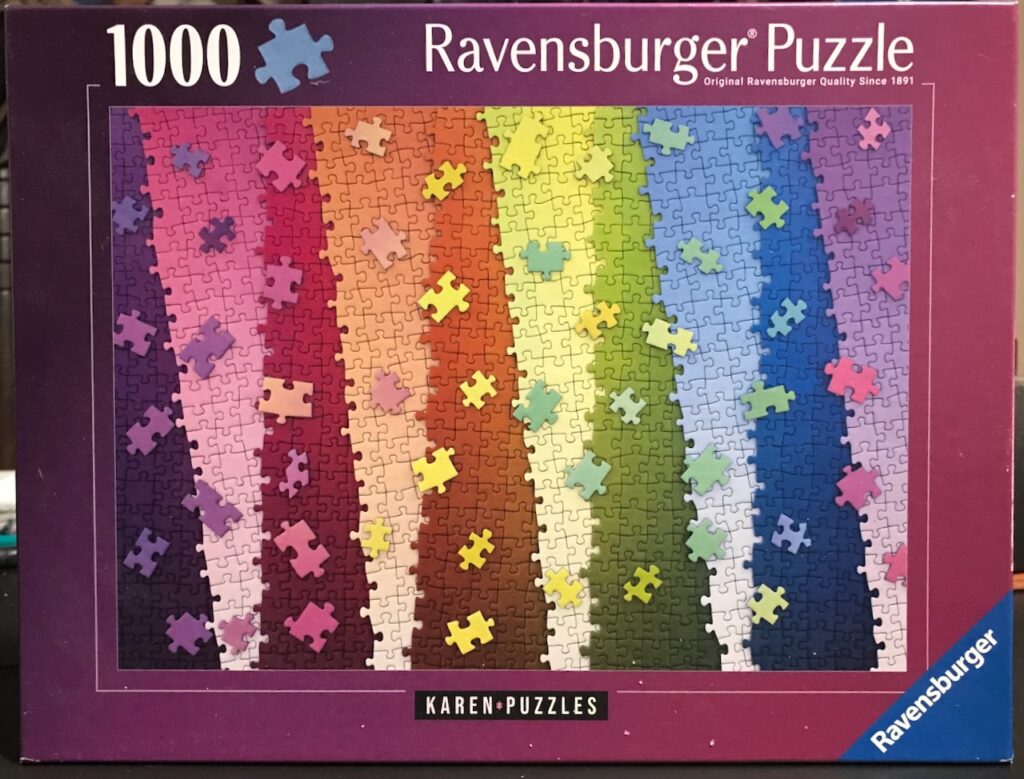
The adventure begins
The jigsaw puzzle arrived on the same day as a Kickstarter game I’d ordered about three years prior, Dragon Eclipse
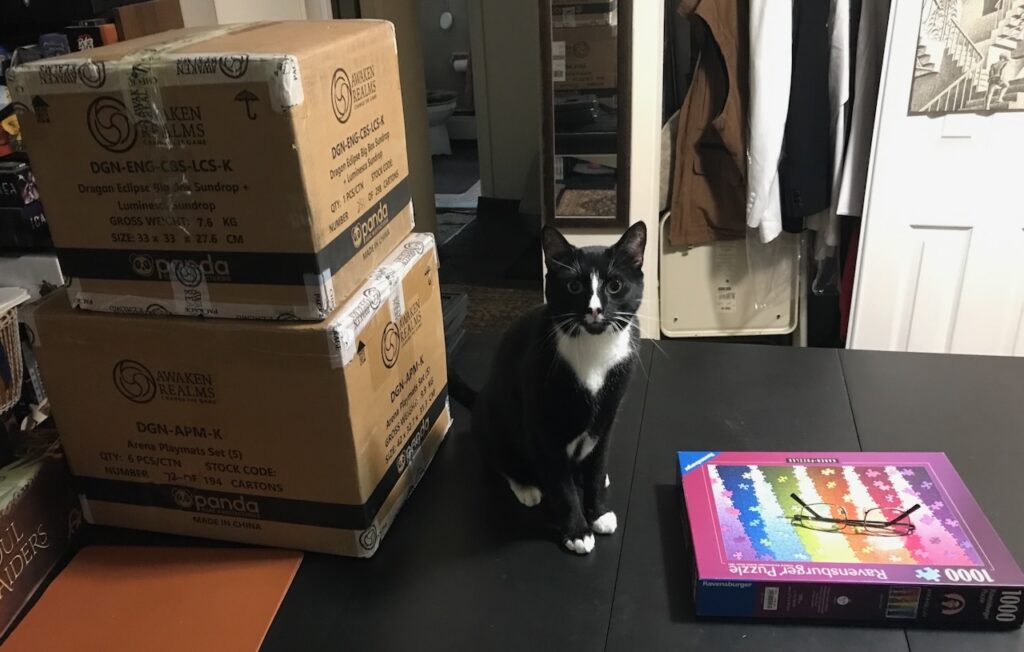
From watching Karen Puzzles’ videos, I knew that I should start by sorting the pieces by color, setting aside any edge pieces.
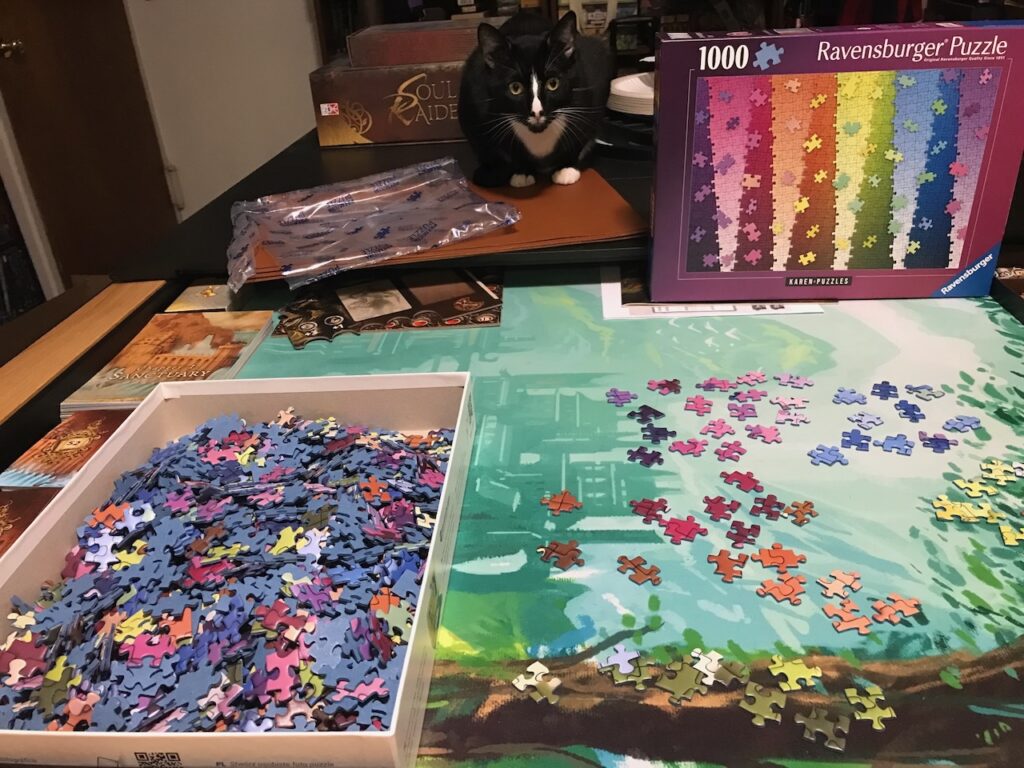
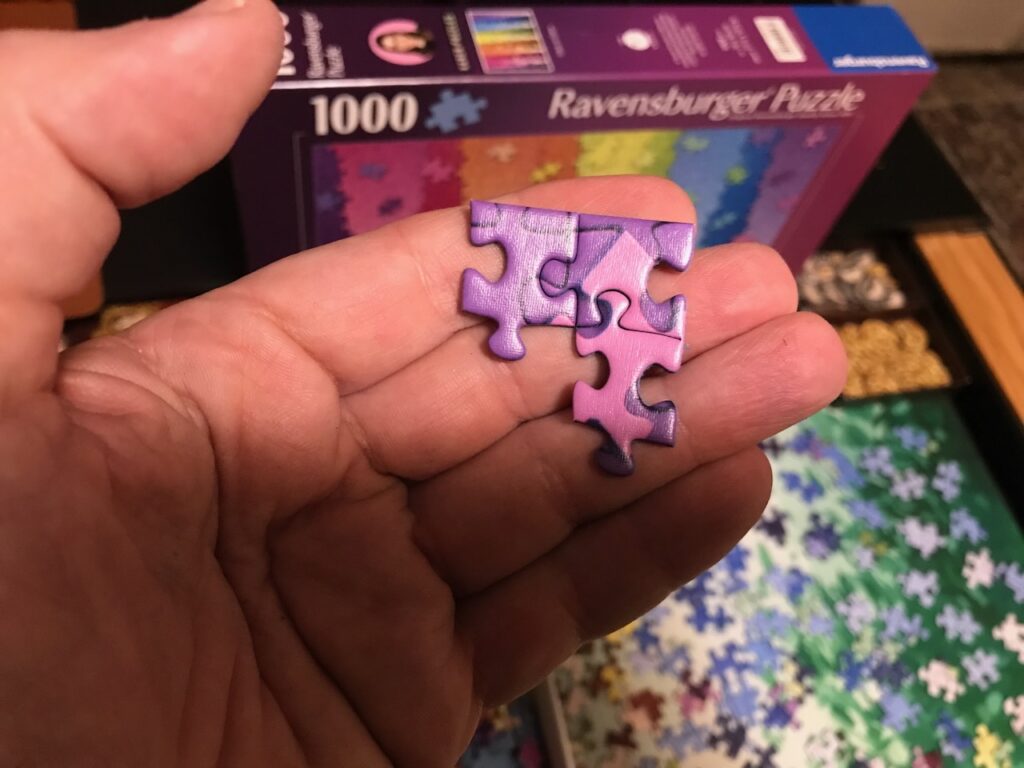
The above photo shows a layer of complexity to this puzzle that I did not anticipate.
In her videos, Karen Puzzles often comments how easy it is to solve puzzles with large areas of color gradients (or just “gradient puzzles” for short). Part of the reason I picked this puzzle was that its image was several sections of gradients. All of the “Puzzles on Puzzles” series that Karen designed are gradient puzzles of some kind. I picked this one because it had the fewest number of pieces.
If I’d remembered the video in which she talked about the puzzle’s design, I might have picked a different one:
What makes this puzzle more challenging is that it’s a photo of puzzle pieces. In other words, the puzzle-piece outlines you see on the box cover are actually part of the image, not the outlines of the physical pieces.
When I looked at a puzzle piece and saw a line across it, I couldn’t tell if it was a boundary between gradients, a border between the background and one of the foreground puzzle-piece images, or a dividing line between the puzzle pieces within the image.
Ah, well. Caveat emptor.
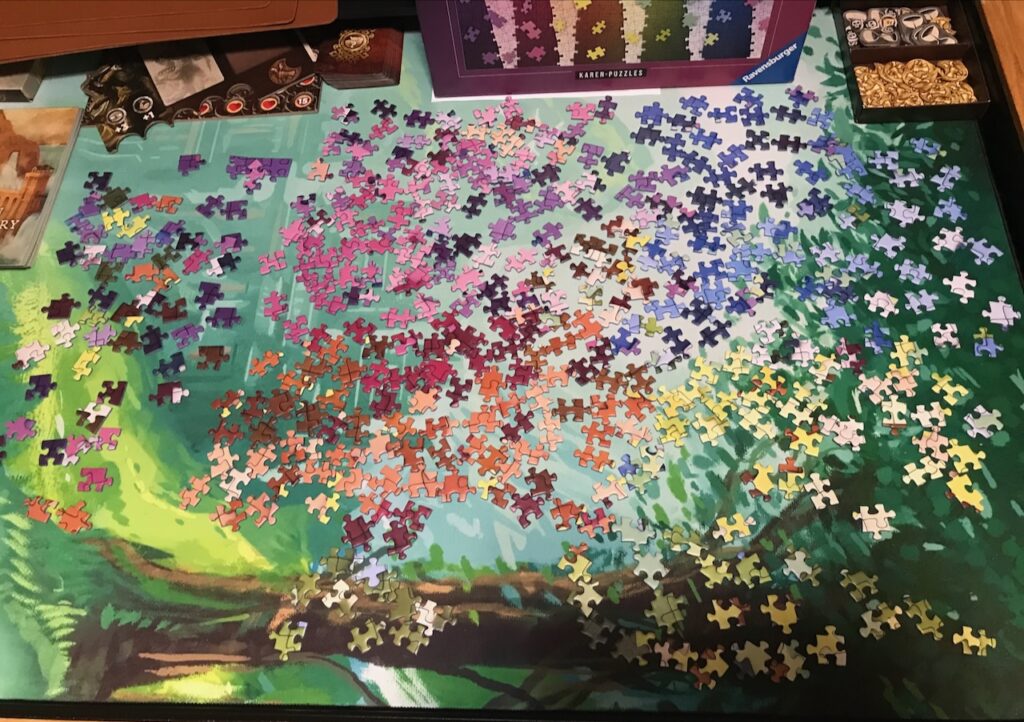
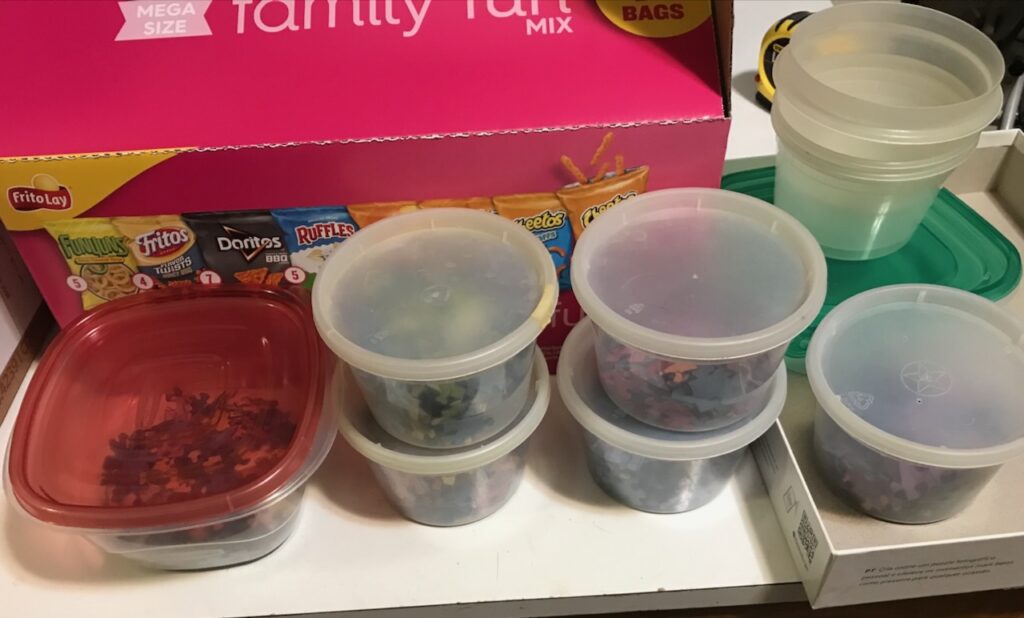
We enter the dungeon, searching for traps
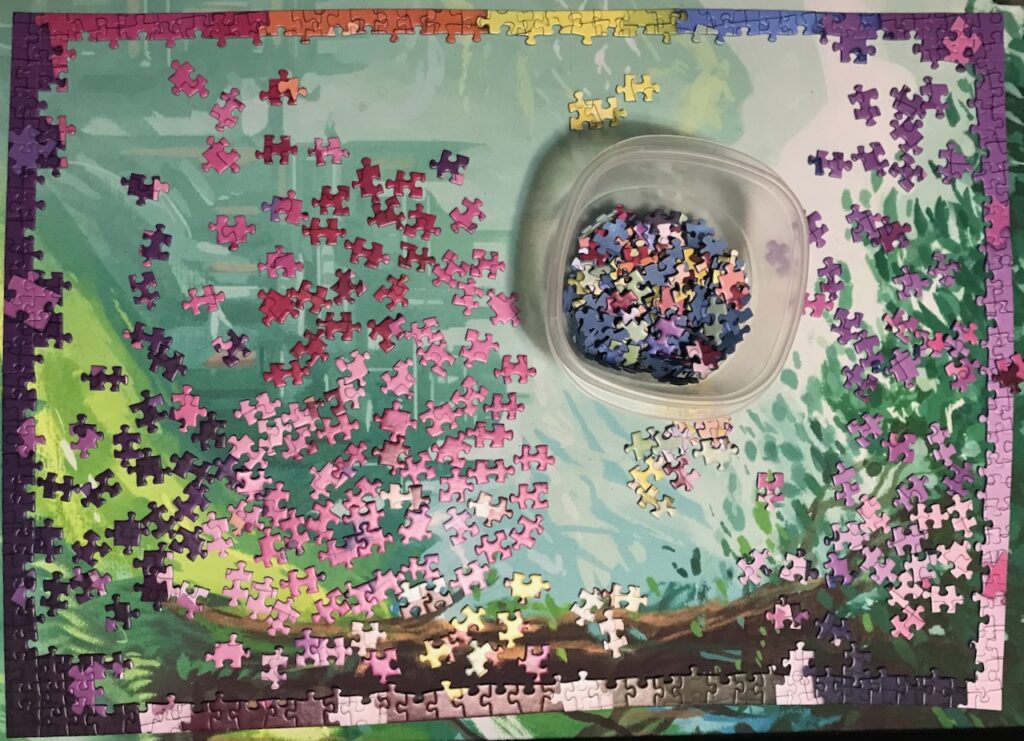
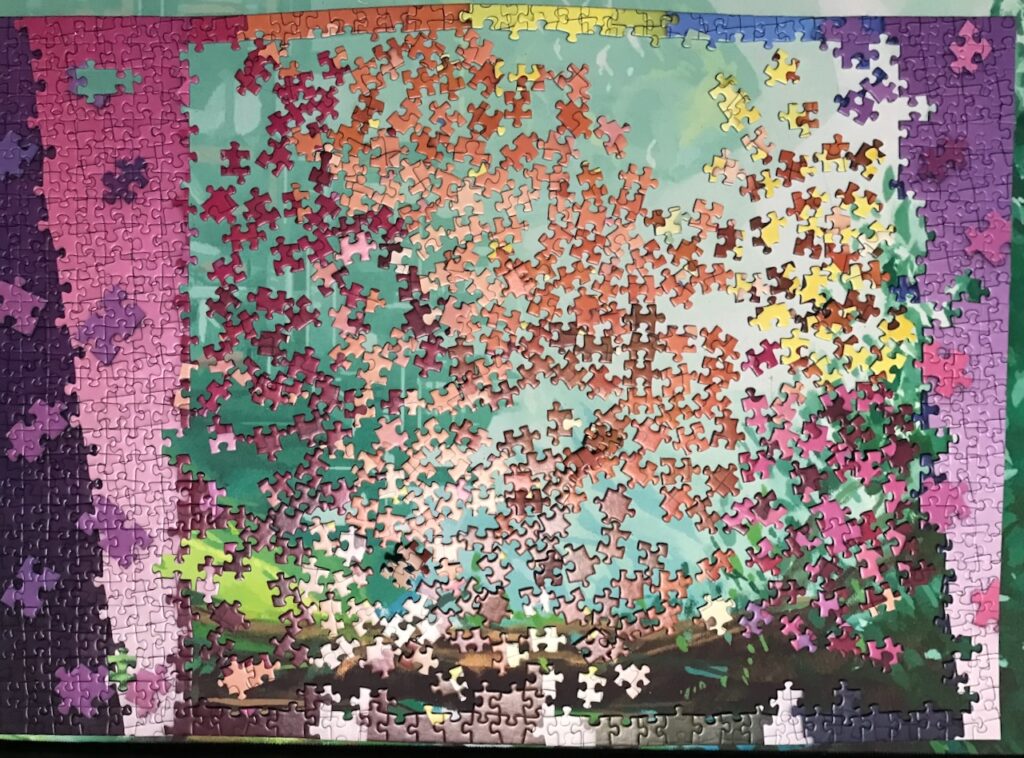
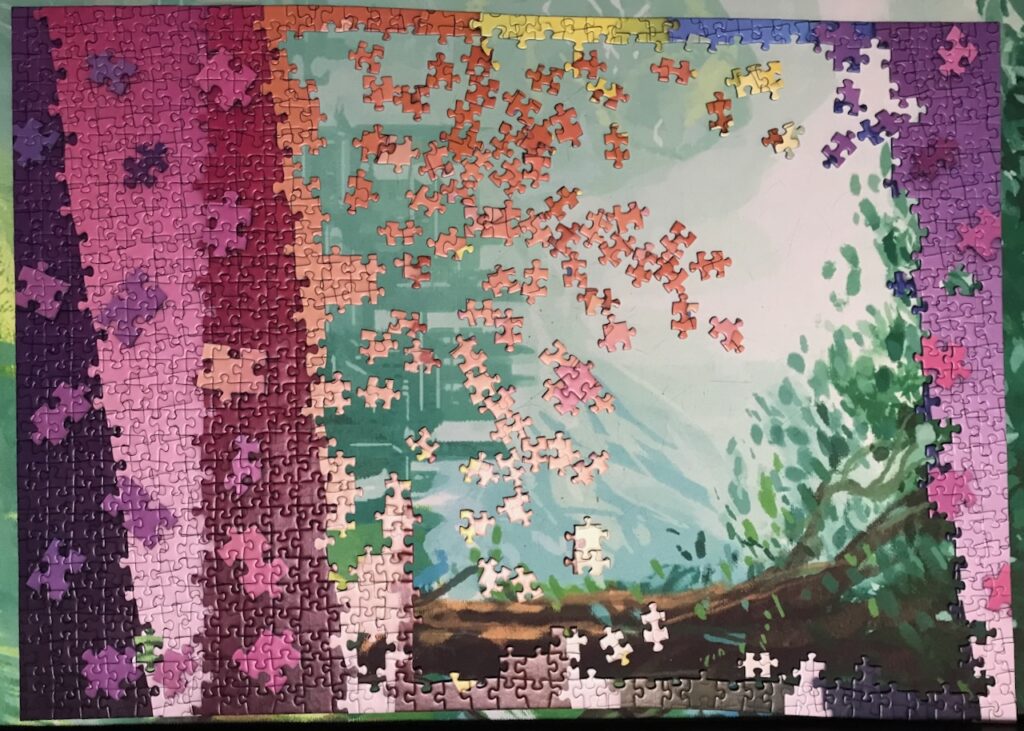
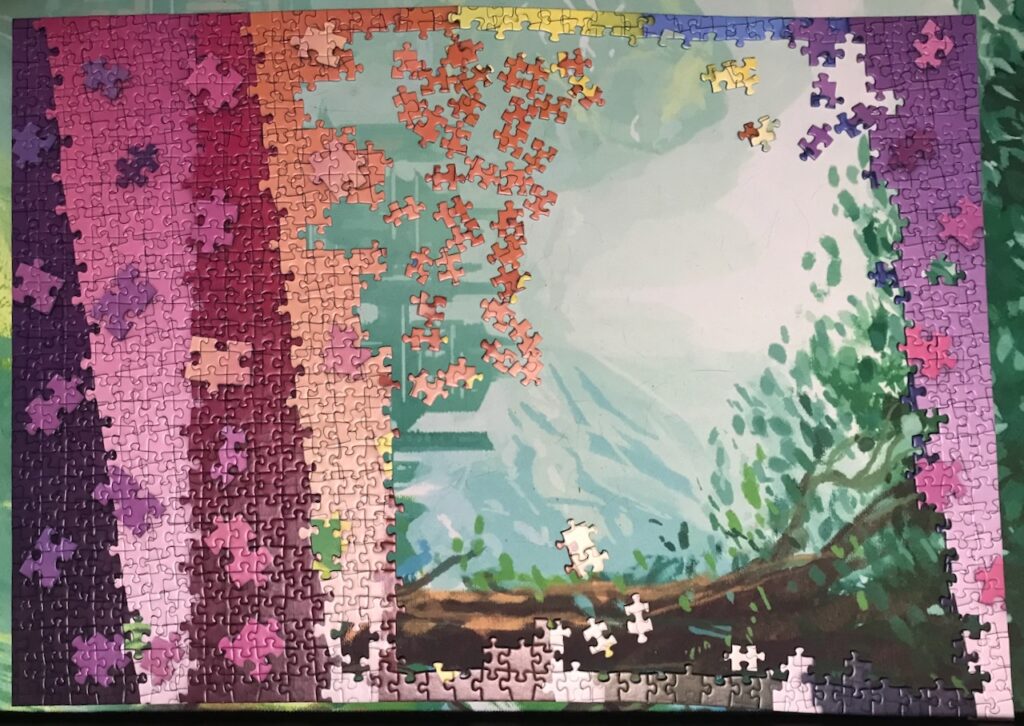
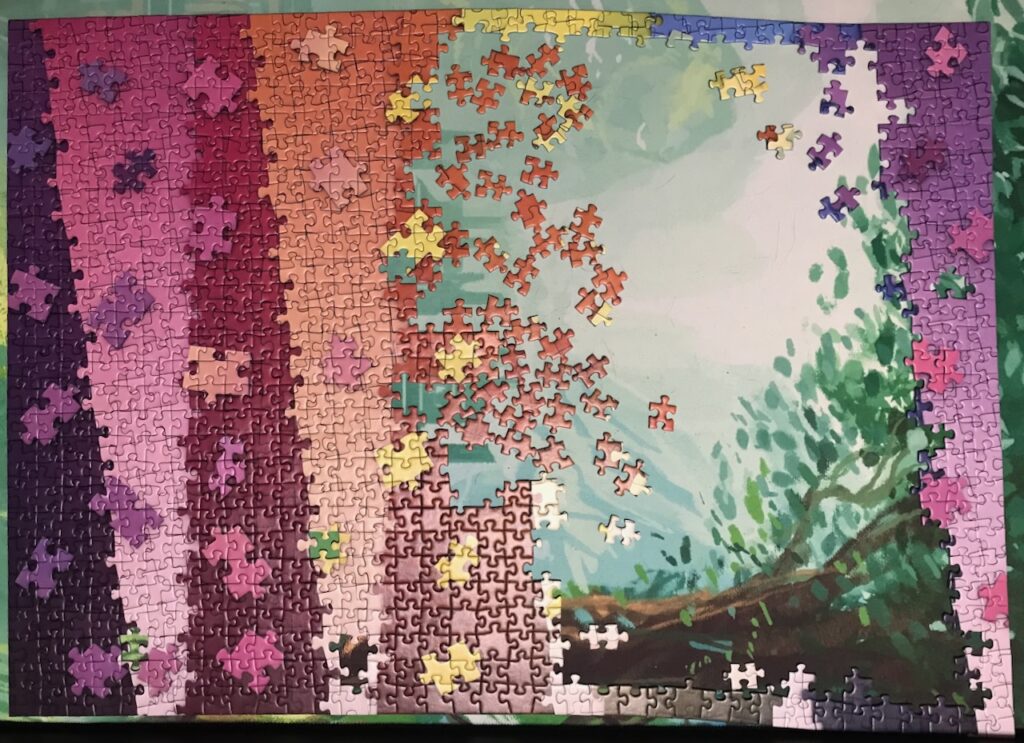
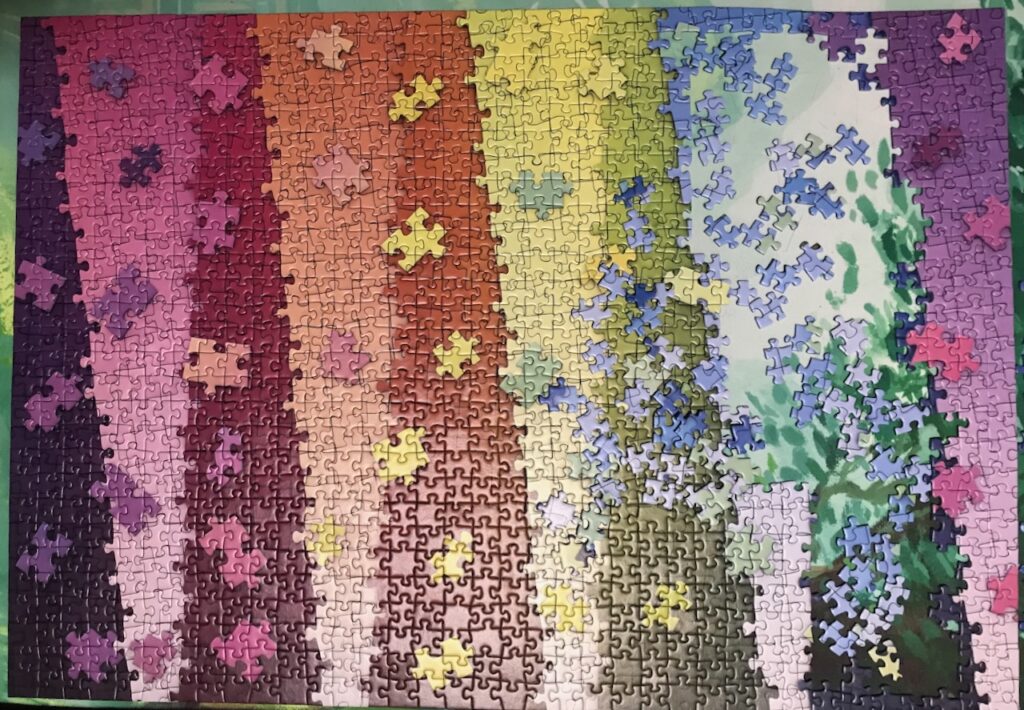
And then…
Something strange happened. This one piece, which was meant to be an NPC, suddenly acquired a special significance in my mind.
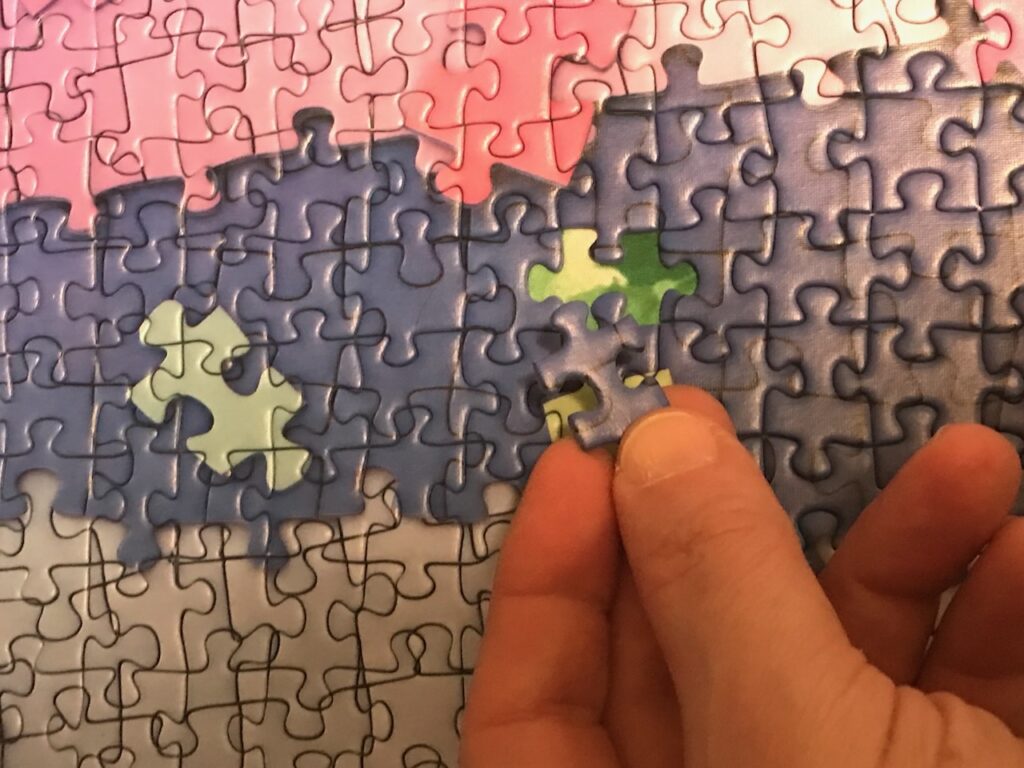
The puzzle gradually shifted focus, until it entirely became about the adventures of Melissa. I began to write Melissa fanfic in my head–
What the heck?
OK, here’s the joke in case you haven’t figured it out (which means you didn’t find the joke funny):
It takes only a brief glance at this blog to see that for the past several months my posts have focussed on Baldur’s Gate 3. I decided to write a post in which I discuss a jigsaw puzzle with the same intensity.
Let’s get real
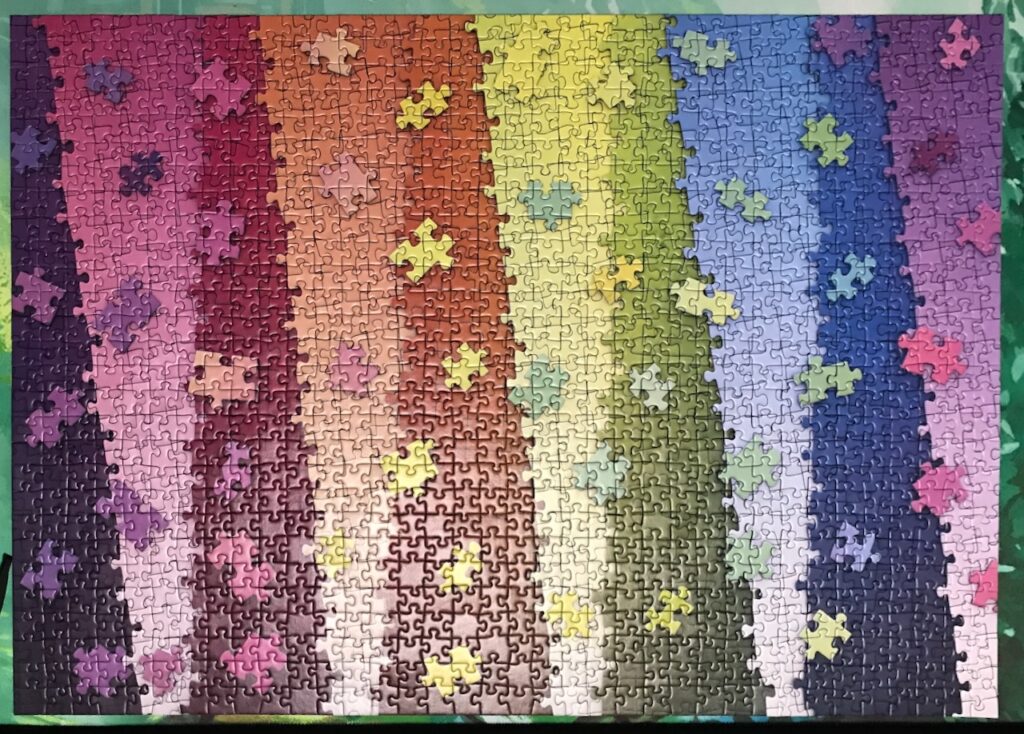
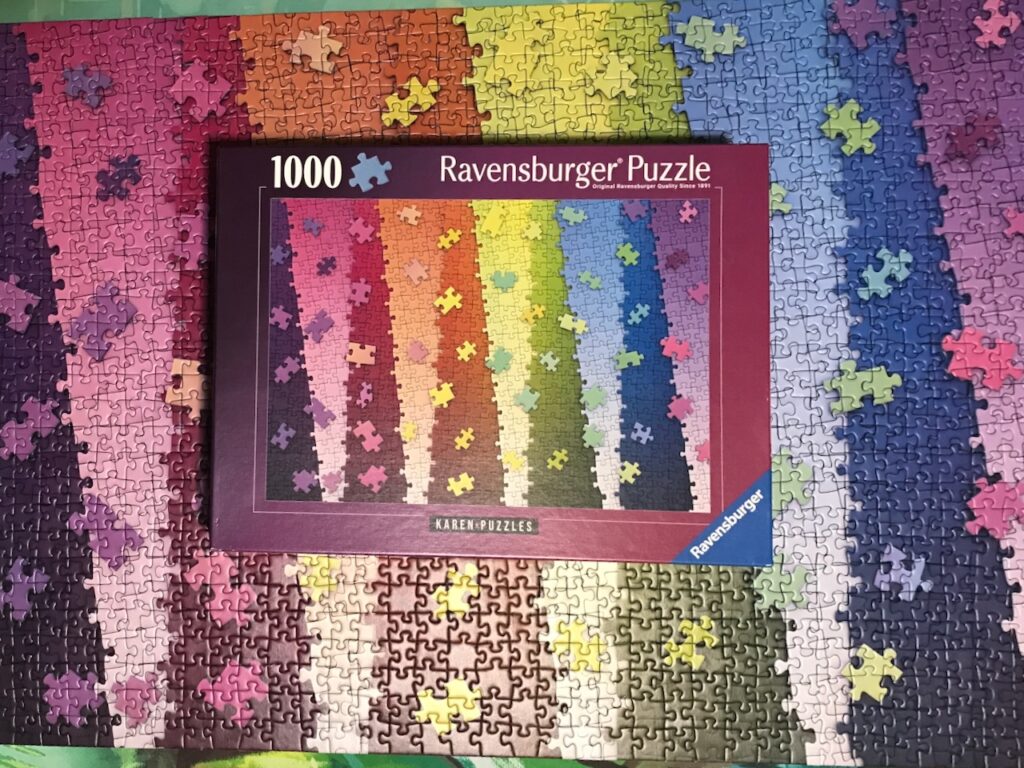
From the timestamps on the photos, it took me about three days, working on it 2-4 hours each days.
Will I do this again?
If you meant will I solve another jigsaw puzzle? No. This got it out of my system. Eventually I’ll disassemble the puzzle and ask a friend to put it up for auction at a local gaming convention.
If you meant will I write another post that’s overly-focused on my latest game? Maybe…